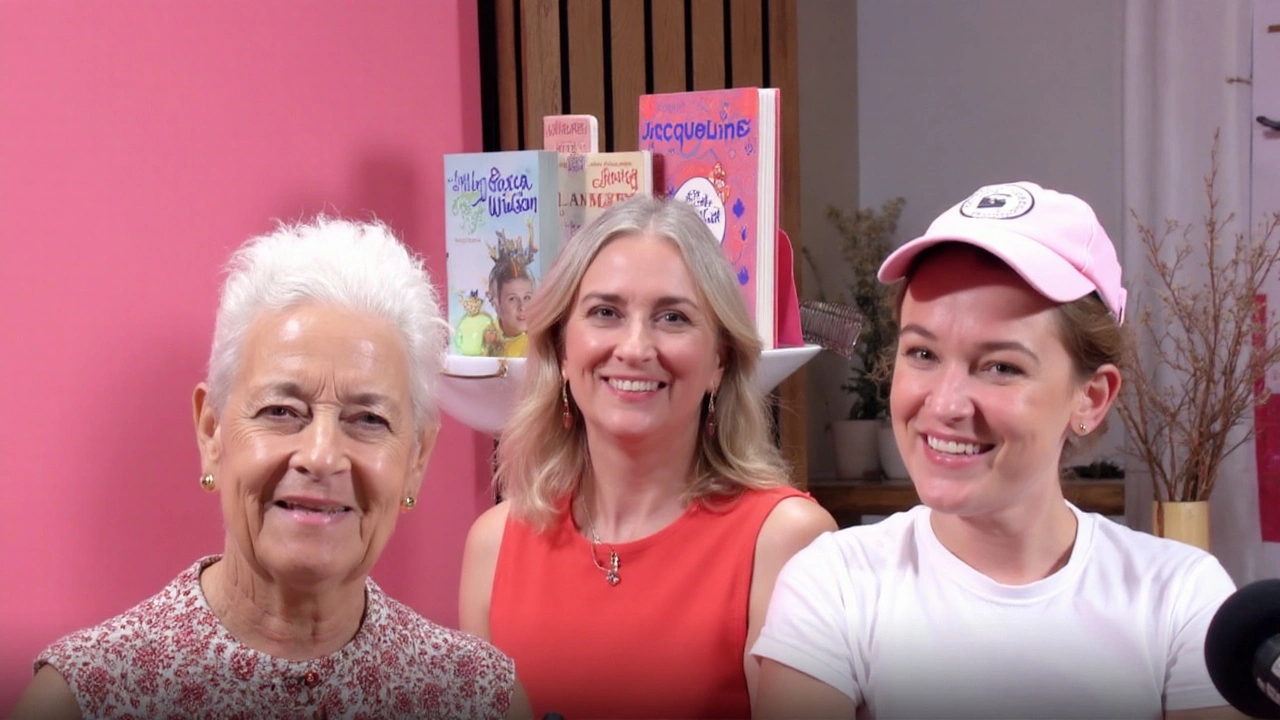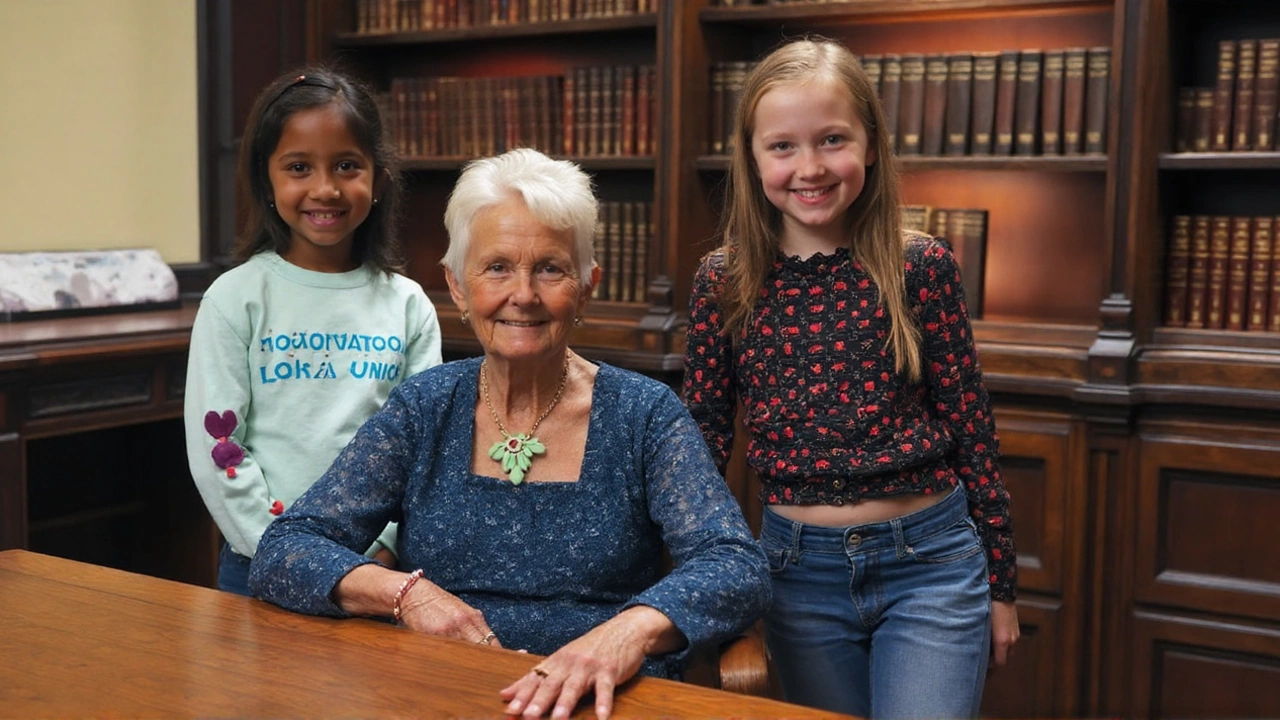A lost interview, but a story everyone knows
The specific Author Q&A with Jacqueline Wilson from Big Issue North isn’t available to read right now. That’s a shame, because Wilson’s interviews are usually brisk, candid, and full of smart advice for young readers and writers. But even without that piece, there’s plenty we can say about one of Britain’s most influential children’s authors—what she writes about, why her stories stuck, and how her work keeps finding new audiences.
Start with the basics. Wilson was born in Bath in 1945 and grew up in Kingston upon Thames. She worked in magazines early on—time in Dundee with a publisher known for shaping youth titles—before turning to fiction full-time. The big breakthrough arrived with The Story of Tracy Beaker in the early 1990s, a book that put a child in care at the heart of the story without soft-pedalling the chaos, anger, or humour of that life. It was sharp, funny, and completely on the kid’s side.
Tracy Beaker didn’t stay on the page. The character turned into a long-running TV phenomenon on CBBC, then came roaring back years later with My Mum Tracy Beaker and The Beaker Girls. That second wave mattered: it brought the original readers—now parents—back to the franchise, and introduced a new generation to a character who refuses to be tidied up for adults’ comfort.
Wilson’s books have sold in the tens of millions—north of 40 million in the UK alone—and they travel well because they read like kids talk. Her sentences are clean. Her narrators feel like real people. And the themes are unmissable: care homes and the foster system, divorce and stepfamilies, money worries, friendship dramas, crushes that don’t go to plan, and parents who are complicated or simply not there. She writes about heavy stuff with warmth, but she never cheats the truth.
There’s also the look of her books. Nick Sharratt’s illustrations became part of the Wilson universe—bold lines, quick gags, a visual voice that matched the energy of the text. That pairing did more than make the covers pop. For many reluctant readers, the illustrations broke up the page and gave them a way in.
Serving as Children’s Laureate from 2005 to 2007, Wilson leaned into one cause over and over: access to reading. She talked up libraries, school visits, and the power of kids choosing what they want to read, not what adults presume they should. In 2008, she was made a Dame for services to literature, a rare honour in children’s books—and also a reminder that the sector, often sidelined, changes lives at scale.
If the Big Issue North Q&A were in front of us, it would likely have touched on process. Wilson has long said she drafts by hand, filling notebooks before a typed version appears. That old-school routine fits the tone of the work: steady, structured, and generous with character detail. It’s why her books feel lived-in. You meet a kid on page one, and by page ten, you know their best friend, their biggest fear, and the thing they hide in the back of the wardrobe.
It also would probably have asked about the shift from contemporary stories to historical ones. Hetty Feather, set in Victorian London’s Foundling Hospital, broadened Wilson’s canvas without losing her fix on a girl finding her voice. Those books spun into stage and TV adaptations, proving her formula—intimate voice, high stakes, big heart—works outside the modern day.
Another likely topic: honesty. Wilson has been frank for years about why she writes difficult subjects for kids. Childhood isn’t tidy. Families split. Money runs out. Adults make mistakes. Her view is that young readers can handle the truth if you tell it clearly and respectfully. That stance has put her at odds with a few parents and schools over time, but it’s also why readers trust her. You don’t feel managed when you read a Wilson book. You feel seen.
There’s been evolution, too. In recent work, Wilson has shown more explicitly queer storylines—reflecting the world her readers already live in—and kept pace with a generation that lives partly online. She hasn’t chased slang or trends; she sticks to character and consequence. That restraint is a big reason her books age well.
If you’ve ever read Wilson in interview, you’ll know she talks as directly as she writes. She answers the question asked, not the one she wishes she’d been asked. She’ll usually slip in two things: a small craft tip (keep a notebook, listen to how people actually speak) and a nudge to browse a library shelf you’ve never tried. It’s a practical worldview—curiosity first, judgment last.
There’s also the wider context of where the missing Q&A appeared. Big Issue North is part of a network of street papers sold by vendors who are often navigating poverty or insecurity. Its journalism sits at an interesting crossroads: culture coverage that also supports a social mission. When an interview like this goes missing—because of rights changes, archiving gaps, or a broken link—readers lose more than a celebrity chat. They lose a slice of cultural memory tied to a publication with a purpose beyond clicks.
What we can reconstruct is the shape of the conversation. Wilson would have been asked about a new release, what sparked it, and which character got under her skin. There might have been a question about Tracy Beaker’s enduring pull, or how it felt to watch Dani Harmer reprise the role for a new audience. Expect a nod to libraries, a shout-out to illustrators and editors who don’t get enough credit, and a reminder that kids are tougher than we think, especially when given a story that respects them.
The rest is right there on the shelves. Double Act, Lola Rose, The Illustrated Mum, Vicky Angel, Clean Break, Love Frankie—the titles chart not a single lane but a consistent promise. Readers will get warmth without sugarcoating, humour without cruelty, and endings that feel earned, not forced. Even the villains, such as they are, come out as flawed humans rather than monsters. That’s a gift to young readers trying to decode the adults around them.
Wilson’s status in British culture comes from more than book sales and TV ratings. It’s the way her stories get passed down—a dog-eared paperback in a school library; a grandparent buying the latest hardback every Christmas; a teacher slipping a copy to the kid who’s having a rough week. You don’t build that kind of trust with hype. You build it by telling the truth, one page at a time.

Why the words still land
The children’s book world moves fast. Franchises bloom and fade. But Wilson’s work has held its ground because it respects the reader’s intelligence and refuses to look away from the messy parts of growing up. That’s why a single missing Q&A sparks such curiosity. People want to hear, in her own voice, how she keeps finding the emotional core of ordinary lives and making it feel urgent.
Until that interview reappears, the evidence is everywhere else: on TV screens, in stage versions, and in the circulation logs of school libraries. Kids keep finding her, often because a friend presses a book into their hands and says, “You’ll get this.” It’s one of the few word-of-mouth chains adults don’t control—and one that keeps renewing itself.
If the measure of a writer is who shows up decades in, Wilson clears the bar. She’s a fixture without feeling fixed in time, a writer who made room for millions of readers who didn’t see themselves in glossy stories. Whether or not that Q&A returns to the web, its subject is still speaking—through characters who argue back, hope hard, and keep their courage when the adults don’t deserve it.
